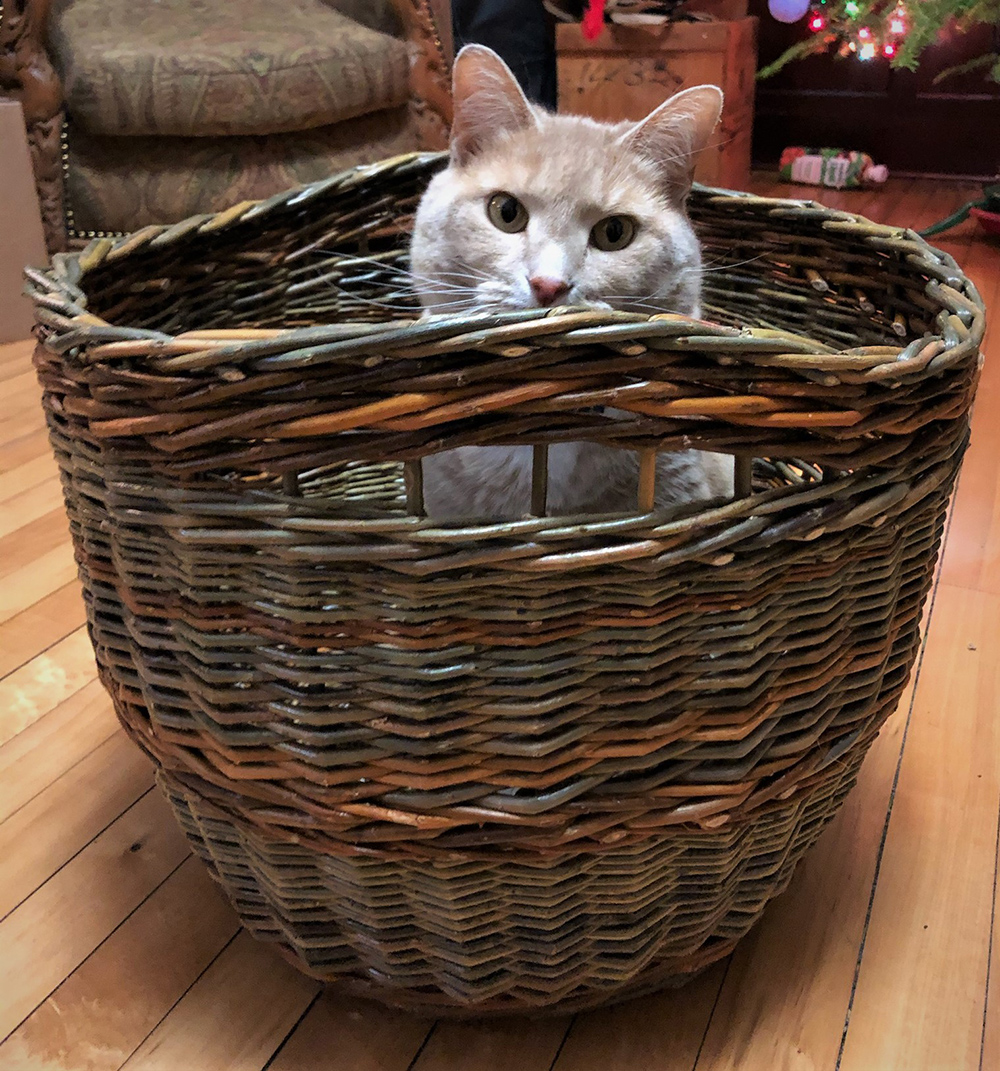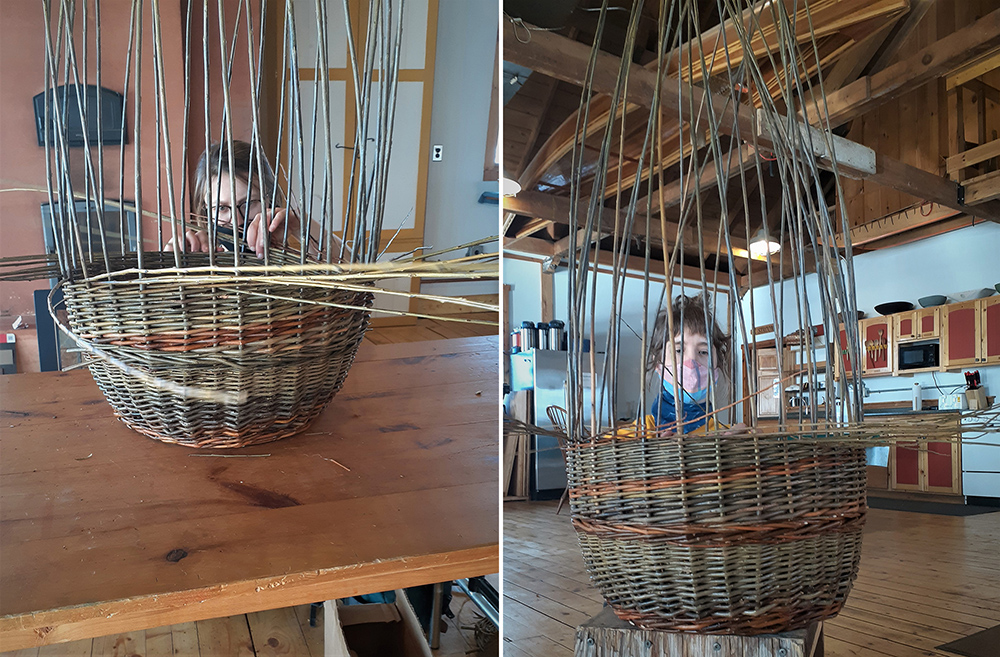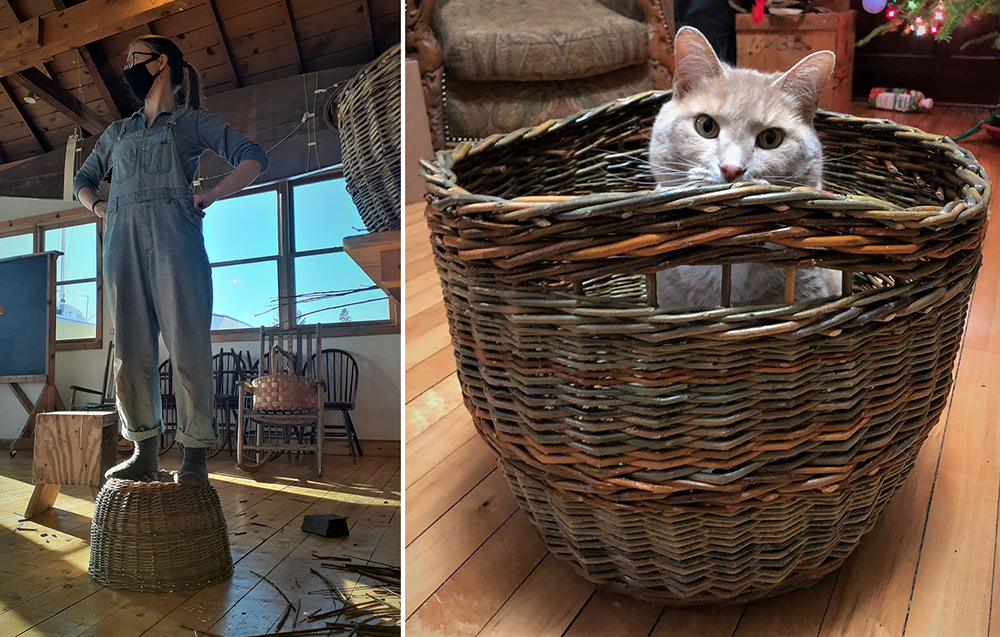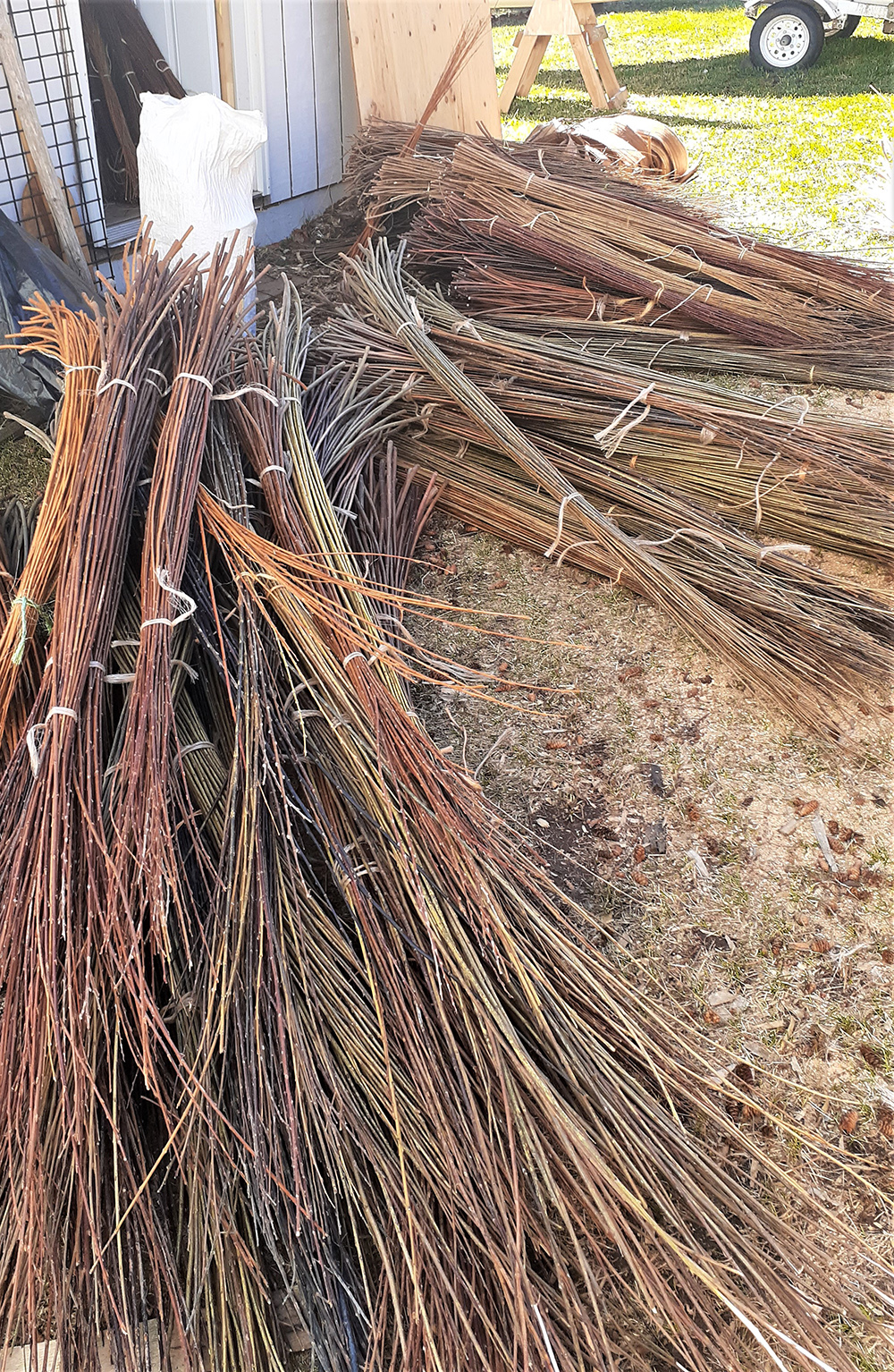
Learning and teaching reflections

In her latest blog post, resident artisan Emily Derke reflects on how the changes of the last year have impacted teaching and learning.
Teaching is one of the ways I love to connect with and meet new people. Classes can draw a crowd with mutual interests and varied walks of life. I typically teach a lot in the summer months, and it’s not uncommon to have most weekends booked from May through October. I teach a variety of basketry workshops, foods and wild harvest related classes, and other handcrafts that relate to the local environment.
2020 began with great plans and way too many ideas of how I would continue to expand my teaching, while getting into new learning endeavors while I participate in North House’s artisan development program. As the world started rearranging itself, and many scheduled things were cancelled, I found myself digging in and embracing the time without teaching public workshops, and now am wondering how I had maintained such a pace.
Many ways of learning from home developed as some of my travel plans evaporated — working with teachers remotely, teaming up with other local friends to create some structure together, and sharing between the people in our already close network.
Christine working in our shared natural dye science lab / Basswood bark rope experiments
In the last 10 years, I have been lucky to learn from teachers in a variety of settings. At one point I lived with my teacher, Margaret Mathewson, on her property for about a year and a half. Prior to that time, I hadn’t taken many craft workshops or participated in other structured forms of learning. I mostly worked on willow basket making while living there and also dabbled in natural dyes, hide tanning, wild foods, hand sewing, and other tidbits. I think different things can happen when you are able to incorporate learning into daily life, especially for a longer duration of time. The small setting of one on one, or just a few students who can also learn together and from each other is a unique setting to be in.
I enjoy that way of learning — where you live in close proximity to someone, and do things together at times, and when specific instruction is necessary, but also just learn in a passive way, simply by surrounding yourself with people who are so rich with knowledge and experience that is of mutual interest.
Willow basketry is the first thing I really dug in to. I was lucky to live in a setting when I was first learning, where I had tools, material, time and collective inspiration. I still have miles and miles to go with my learning in working with willow, but I have the basics down pretty well. I find willow basketry a bit more challenging to teach than other types of basket making, and also challenging for students to do. But I find that I love it the most. It takes a lot of hand strength, and there are many patterns and weaves to learn within the basket. I’ve been experimenting with ways for learners to have some way to practice handling the material before weaving it into their one and only basket that will take them two days to make.
Christine & Alex working on their baskets
This year I got to work with local friends and North House program participants, Alex and Christine to make willow baskets. We spent three days together, plus a little extra work ahead of time, and they were each able to make two baskets. I loved this smaller setting of working with just two people. First, we worked through the basics of how a basket is made by creating a simple, small basket that incorporated the basic weaving patterns, and gave them a chance to see how the materials needed to be handled and shaped. Next, we spent two days working on larger baskets. This gave room for personal aesthetic decisions and trying some new weaving patterns.

Completed baskets being tested for use
Following that three day weaving weekend, Alex and I worked together one or two days a week to continue making willow baskets. With a more casual pace, we could spend time together selecting and preparing the materials we would use, harvesting and sorting, testing new ideas, and covering a wide range of weaving options. In my opinion, this is an ideal setting for learning and teaching. It was such a treat to get to share something I love so much over a consistent period of time, and with mutual enthusiasm for the materials and process.

